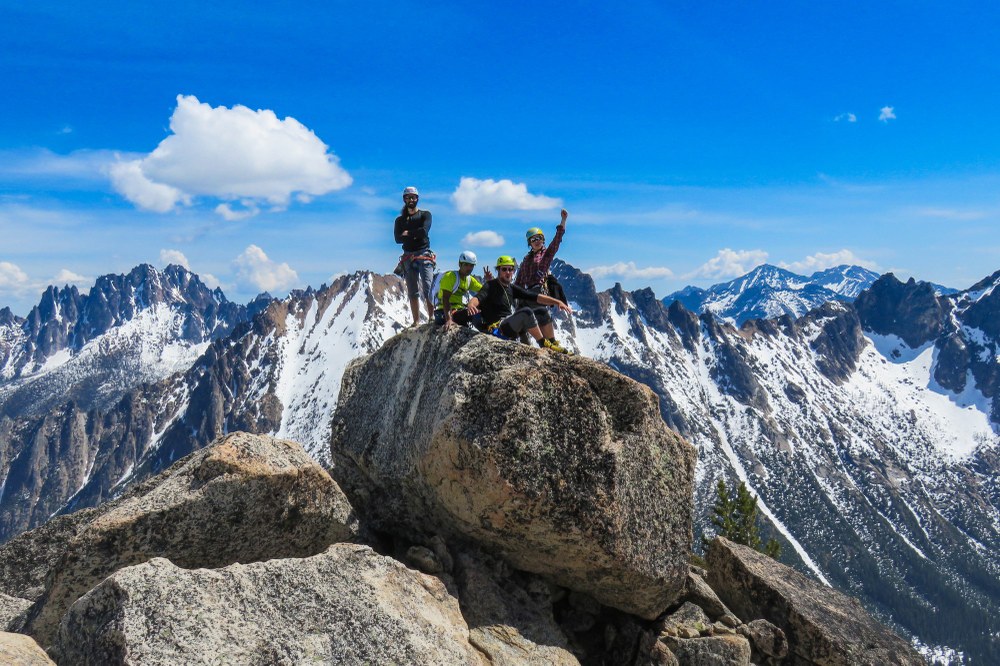
Today, the U.S. Forest Service announced new guidance that will change the operation of the agency’s outfitter-guide permitting system. This new guidance will streamline the process for issuing permits to outdoor leaders and recreation businesses that take people outdoors. These improvements will provide more access to federal lands and waters for a wide range of facilitated use.
The Permitting Challenges
We're thrilled to see the Forest Service’s action on this issue! The current setup and implementation of the permitting system for organized group access to our National Forests restricts many people from responsibly accessing the outdoors. These issues impact a broad spectrum of organizations, from outfitters and guides,to outdoor education organizations and nonprofits. Because of these challenges, we've been engaged in national conversations and have been working to change permitting policy for the past five years.
We first engaged in this with other nonprofits working to identify permitting issues in National Forests. A year and a half ago, we helped form the Outdoor Access Working Group (OAWG), a group representative of different recreation groups and companies in the outdoor industry. The OAWG has been able to bring a united voice to advocate for permitting processes that incorporate the needs of these groups and by partnering directly with land management agencies.
Tangible change
The Forest Service’s guidance from U.S. Forest Service Chief Thomas Tidwell outlines how staff should interpret the agency’s current outfitter-guide permitting policy. The purpose of the Chief’s letter is to adjust the way Forest Service staff apply the policy so the process of issuing permits can be completed more quickly and efficiently. The Chief’s letter also describes certain situations where outdoor activities have such minimal effects that they can be authorized without requiring permits at all, further simplifying the process for getting people out on public lands.
This new guidance is a big step forward in our efforts to increase opportunities for facilitated recreational access on public lands and waters. In their words, The US Forest Service is “shifting away from regulating occupancy use and towards a future of enhancing visitor services through outdoor recreation providers.” USFS also praised group trips for creating opportunities for new visitors, youth, underserved communities, minority visitors, and others to experience the great outdoors on our public lands.
Implementation Plan
"The Forest Service’s streamlined approach to special-use permitting will be implemented over time. Ongoing user feedback will help the agency continually evaluate and adjust to provide the best possible customer service. Next steps include:
- Streamlining the process to receive or renew a recreation special use permit, making it simpler and faster through the use of existing agency authorities.
- Increasing staff capacity and the consistency of the permit process across the country by developing new standardized training programs and exploring new staffing strategies.
- Encouraging managers to take greater advantage of allowable waivers when a special use permit is not required, for example, where a proposed use would have only nominal impact on lands, resources, and programs or operations.
- Investing in technology to improve business tools and data that support recreation special uses, including an electronic permit application process.”
See the Forest Service’s Press Release here.
A Good Year for Recreation ACCESS
This announcement from the Forest Service comes at the heals of another major win for outdoor access. A few months ago, we applauded Secretary Jewell's order seeking to decrease barriers for disadvantaged and under-resourced youth to access America’s public lands and waters. The order —directed towards the National Park Service, Department of Fish and Wildlife, Bureau of Land Management, and the Bureau of Reclamation—calls for "immediate and concrete steps to facilitate access by disadvantaged and under-resourced youth to lands managed by their respective bureau." We look at the Secretary's order as an example of the outdoor industry and community groups coming together with one powerful voice to lead better public policy.
Expanding access to the outdoors for more backgrounds and demographics through organized group outings and permitting reform is integral to our mission and protects future access to recreation through outdoor education and stewardship. Today the outdoor community celebrates real, tangible progress towards this goal.
 The Mountaineers
The Mountaineers